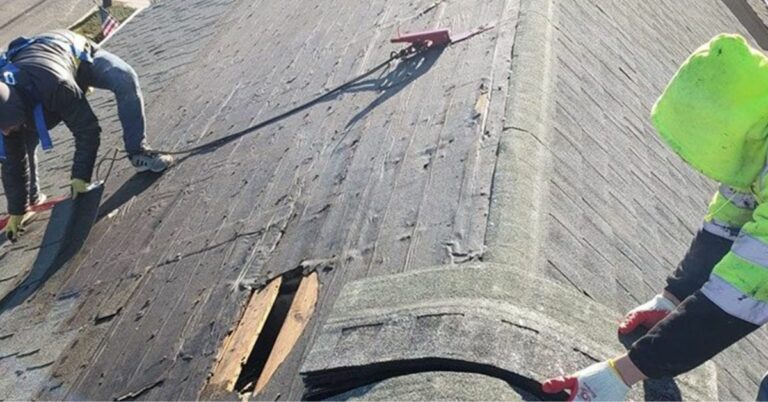Formaldehyde Remover: Why It’s Essential for a Healthy Home
Formaldehyde is a colorless, strong-smelling gas that can be found in many household products and building materials. While it serves various industrial purposes, formaldehyde exposure can pose significant health risks, especially in enclosed spaces. Over time, it can accumulate in the air, leading to poor indoor air quality and potential health issues. This is why using a formaldehyde remover is crucial for maintaining a safe and healthy living environment.
In this article, we will explore the sources of formaldehyde, its health effects, and how a Formaldehyde Remover can effectively reduce its presence in your home.
What is Formaldehyde?
Formaldehyde (CH₂O) is a volatile organic compound (VOC) used in a variety of household products and industrial applications. It is commonly found in adhesives, pressed wood products, insulation materials, paints, and even personal care products.
When these products release formaldehyde gas into the air, it can accumulate and contribute to poor indoor air quality. In small amounts, formaldehyde may not cause immediate harm, but prolonged exposure or high concentrations can lead to adverse health effects.
Sources of Formaldehyde in the Home
Formaldehyde is present in many everyday products and materials. Here are some common sources:
1. Furniture and Wood Products
Pressed wood products such as particleboard, plywood, and fiberboard are often manufactured using adhesives that contain formaldehyde. Furniture made from these materials can release formaldehyde gas over time.
2. Household Cleaners and Disinfectants
Many cleaning products, including disinfectants and air fresheners, contain formaldehyde or formaldehyde-releasing agents. These products can increase formaldehyde levels when used regularly.
3. Paints and Coatings
Wall paints, varnishes, and wood finishes can emit formaldehyde during the drying process. Even after drying, these products may continue to release low levels of formaldehyde for months.
4. Carpets and Flooring
Synthetic carpets, rugs, and flooring materials may be treated with formaldehyde-based resins, which can off-gas into the air over time.
5. Tobacco Smoke
Cigarette smoke is a significant source of formaldehyde indoors. If smoking occurs inside the house, formaldehyde levels can build up quickly.
Health Effects of Formaldehyde Exposure
Prolonged or high-level exposure to formaldehyde can have a range of health effects, depending on the concentration and duration of exposure.
1. Respiratory Issues
Formaldehyde is a known respiratory irritant. Inhaling formaldehyde vapors can cause:
- Coughing
- Wheezing
- Shortness of breath
- Sore throat
2. Eye, Nose, and Throat Irritation
Low-level exposure can lead to mild irritation, causing watery eyes, a burning sensation in the nose, and discomfort in the throat.
3. Allergic Reactions
Formaldehyde can trigger allergic reactions in sensitive individuals, including skin rashes, itching, and respiratory discomfort.
4. Long-Term Health Risks
Long-term exposure to high levels of formaldehyde has been linked to more serious health conditions, including:
- Chronic respiratory problems
- Increased risk of asthma
- Certain types of cancer (formaldehyde is classified as a potential human carcinogen by the International Agency for Research on Cancer)
How Formaldehyde Removers Work
Formaldehyde removers are designed to reduce or eliminate formaldehyde from the air and surfaces within your home. They work in different ways, depending on the type and technology used.
1. Chemical Neutralization
Some formaldehyde removers contain chemical compounds that react with formaldehyde molecules, breaking them down into harmless byproducts like water and carbon dioxide.
2. Absorption and Adsorption
Activated carbon and other porous materials can absorb and trap formaldehyde molecules from the air. These filters need to be replaced or cleaned regularly to maintain their effectiveness.
3. Photocatalytic Oxidation (PCO)
Advanced formaldehyde removers use UV light and a photocatalyst to break down formaldehyde into non-toxic components. This method is effective for continuous air purification.
4. Natural Plant-Based Solutions
Certain houseplants, such as peace lilies, spider plants, and aloe vera, have been shown to absorb small amounts of formaldehyde and other VOCs from the air.
Benefits of Using a Formaldehyde Remover
Investing in a formaldehyde remover provides several advantages for your health and home environment:
Improved Indoor Air Quality
By removing formaldehyde and other VOCs, a formaldehyde remover helps create cleaner, fresher air indoors.
Reduced Health Risks
Lowering formaldehyde levels minimizes the risk of respiratory issues, allergic reactions, and long-term health problems.
Odor Removal
Formaldehyde is known for its pungent odor. A remover can help eliminate unpleasant smells and improve the overall comfort of your home.
Protection for Sensitive Individuals
Children, elderly individuals, and those with respiratory conditions are more sensitive to formaldehyde. Using a remover helps protect vulnerable household members.
Long-Term Air Quality Maintenance
A high-quality formaldehyde remover provides ongoing air purification, helping to maintain a healthy indoor environment over time.
How to Choose the Right Formaldehyde Remover
When selecting a formaldehyde remover, consider the following factors:
- Room Size: Ensure the remover is suitable for the size of the room where it will be used.
- Technology: Look for effective removal methods such as activated carbon, chemical neutralization, or photocatalytic oxidation.
- Maintenance: Consider how often filters or components need to be replaced or cleaned.
- Noise Level: If the remover will be used in a bedroom or living area, opt for a quiet model.
- Energy Efficiency: Choose a model that consumes minimal energy for cost-effective and eco-friendly use.
FAQs About Formaldehyde Removers
Q1: How do I know if there’s formaldehyde in my home?
A: Formaldehyde can be detected using air quality monitors or test kits designed for VOC detection. Signs of formaldehyde exposure include eye irritation, respiratory discomfort, and a noticeable chemical smell.
Q2: Can I use houseplants to remove formaldehyde?
A: Houseplants like spider plants and peace lilies can absorb small amounts of formaldehyde, but they are not as effective as dedicated formaldehyde removers.
Q3: How often should I replace the filter in a formaldehyde remover?
A: This depends on the type of remover and the manufacturer’s recommendations. Most activated carbon filters should be replaced every 3 to 6 months.
Q4: Is formaldehyde removal necessary if I don’t smell anything?
A: Yes. Formaldehyde can be present even if there’s no noticeable smell. Regular testing and air quality monitoring are important.
Q5: Are formaldehyde removers safe for pets and children?
A: Most formaldehyde removers are safe for pets and children, but check for any specific warnings or instructions provided by the manufacturer.
Conclusion
Formaldehyde is a common but potentially harmful compound found in many homes. A formaldehyde remover plays a vital role in maintaining clean indoor air and protecting your health. By understanding the sources of formaldehyde and investing in an effective removal solution, you can create a safer and more comfortable living environment for you and your family.







